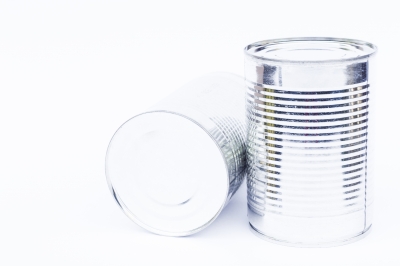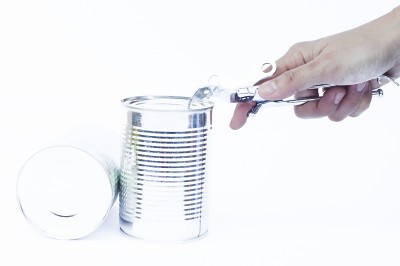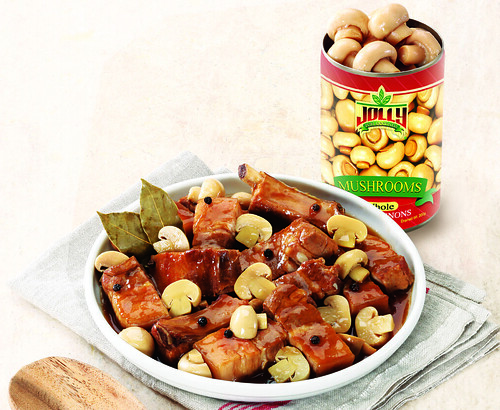
Many have probably heard about the growing whole foods movement. The concept is quite simple, eat healthy to live healthy. The idea is to stay away from processed goods, and consume fresh food from the farm and straight to the table. But contrary to what many think, not all processed foods are unhealthy! In fact, most of the things we eat every day have been preserved or processed in a certain way. That’s why we need to get our facts straight when it comes to food processing. Did You Know That? Humans have been processing food for almost two million years! Ever since our pre-historic ancestors learned how to put meat over fire, they’ve thought of ways to make food last longer. Fast forward to the 21st century and we have learned how to can, freeze, refrigerate, dehydrate, and use other methods of processing to make our food stay longer. Milk, cheese, canned or frozen fruits and veggies, dried fruits and nuts, and healthy whole grain cereals are examples of processed food that are good for you.
Processed food becomes bad when large amounts of sodium and sugar are added to the mix through sweeteners, spices, oils, colors, and preservatives. Eating too much of these complex preparations don’t do good for your waistline and your overall health.
Even The Experts Say So Let’s focus on canned fruits and vegetables. It is inarguable that the best way to enjoy our veggies is right after harvesting. But the truth is that even if we get them from the palengke or the groceries, they’ve probably been sitting on the shelves for a long time. And as an added obsessive compulsive thought, who knows what insects have probably crawled on them when the lights go off at night!
Dietitians say that when you’re not sure of the quality of freshness, the frozen food or canned section remains a good option. US-registered dietitian Marie Spano, during a feature on CNN, said, “Vegetables packed right after picking retain most of their nutrients and antioxidants. You want to cook vegetables in as little water as possible. So microwave, steaming, and stir-frying are some of your best cooking methods.” Hearing it straight from a reliable source, it is with no doubt that these foods are good for you too when packed right after harvest, and processed with minimal sodium and sugar.
A Jolly Idea We need four to six servings of fruits and vegetables a day to keep strong and fit. It seems that every day, we make a pledge to eat healthy, but our hectic schedules prevent us from hitting the markets to get fresh produce. It is reassuring to know that we can get healthy goodness straight from the grocery shelves.
The Jolly brand, known for their canned corn and mushrooms, is available in most groceries all over the country. It is made and distributed by Fly Ace Corporation. And according to their product manager, Marilou Acuña, Jolly was conceived as a solution to busy parents who want to serve nutritious meals to their families despite their hectic schedules.
Jolly’s canned vegetables are preserved with only four ingredients, and that’s a good thing. Each can contains vegetables picked at their prime, water, salt, and ascorbic acid.
As dietitians recommend, veggies that go through the canning process need to be packed right after harvest. Fly Ace Corporation takes pride in sharing that they only use freshly picked vegetables. The vegetables are then preserved in water and salt. More on sodium later, but let’s move on to their last ingredient, ascorbic acid.
Although all food preservatives are FDA approved, meaning that they’re safe for human consumption, there are those who belong to the good list and the bad-for-you list. As a general rule, if the ingredient on the can is a bit of a tongue twister, like carbonate-something-something, poly-that, dextro-this, or just over-all confusing, then you can easily mark them as not-good-for-you.
Ascorbic acid is a cousin of Vitamin C. Ascorbic acid has many health benefits. Apart from being an essential vitamin with disease-fighting properties, it is also an impressive natural preservative. Its job is to keep bacteria and mold at bay, and it does that quite effectively! Thus, ascorbic acid is definitely a good guy!
Fresh vegetables. Check. Water. Check. Ascorbic acid. Check.
Well, what about sodium?
What To Do With Sodium Too much of anything is not good, and so it is with salt. When we have too much sodium in our bodies, our blood pressure will elevate, and we become prone to chronic illnesses such as heart and kidney disease.
Canned vegetables will definitely have more sodium than the fresh variety, so we decided to make our own comparison on how most canned mushrooms fare against the fresh kind.
Canned Mushrooms 33 calories, 0g fat, 400mg sodium, 7g carbohydrates, 3g dietary fiber, 3g sugar, and 2g protein.
Fresh Mushrooms 29 calories, 0g fat, 7mg sodium, 4g carbohydrates, 1g dietary fiber, 2g sugar, and 4g protein.
The fight seems pretty even, except for the sodium. It is important to consider that most dietary guidelines recommend keeping your daily sodium intake to less than 2,300mg per day. If you consume a whole can of Jolly mushrooms (and let me tell you, that it is quite, deliciously possible), you still fall below your sodium limit of the day.
But if you’re really trying to limit salt intake, here are a few tips to reduce the amount of sodium in a can of vegetables.
Tip #1: Pour the vegetables into a strainer and remove as much water as possible. Usually, the liquid in the can holds most of its sodium content.
Tip #2: Place the vegetables under the sink and let water run through it for at least 30 seconds right before you are going to cook them. Rinsing is effective in washing off some of the sodium content.
Healthy Choices Made Easier This may seem like a crash course in canned vegetable nutrition, but it was worth the read. It turns out, healthy options for yourself and your family are available, even if you don’t have time to get them fresh from the farm!
Here’s a delicious recipe to try using canned mushrooms and garbanzos PORK HUMBA WITH MUSHROOMS AND GARBANZOS Preparation time: 45 minutes Makes 4 to 5 servings
PORK HUMBA WITH MUSHROOMS AND GARBANZOS Preparation time: 45 minutes Makes 4 to 5 servings
Ingredients 1/2 kilo pork belly, cut in serving pieces 1 tablespoon garlic, crushed 1 small red onion, chopped 1/3 cup vinegar 1/4 cup soy sauce 1/4 cup brown sugar 3 bay leaves 1 cup water 1/4 tablespoon whole peppercorn 2 tablespoons Jolly salted black beans 1 can (198g) Jolly shitake mushrooms, sliced into strips, liquid reserved 1 can (400g) Jolly Whole Mushrooms, drained and quartered 1 can (225g) Jolly garbanzos, drained Jolly canola oil
Procedure 1. Marinate pork in soy sauce, vinegar, bay leaves, and pepper for 30 minutes to one hour. 2. Sauté garlic and onion. Add pork from the marinade. Stir fry for a few minutes until pork starts to render its oily fat. Add water and marinade. 3. Bring to a boil and then lower heat to medium fire. Stew until most of the liquid has evaporated. Add brown sugar stirring once in a while. Simmer until an oily sauce consistency is achieved. Season with soy sauce, vinegar, or sugar according to your taste. 4. Add in Jolly shiitake mushrooms and its liquid, Jolly black beans, and Jolly garbanzos, simmer for 15 minutes.
Tin can images courtesy of punsayaporn at FreeDigitalPhotos.net

Leave a Reply